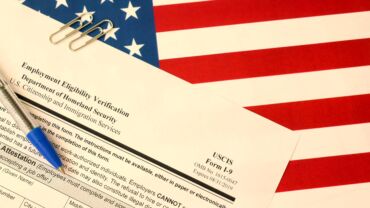As reported in the last episode of the podcast Checkpoint Presents: Payroll on Point, the gig economy of today refers to a general workforce where short-term engagements, temporary contracts, and independent contracting is commonplace. In this podcast, the discussion revolves around the gig workforce, and how to be prepared for this popular work style as it continues to flourish.
The word “gig” is typically associated with a slang term for live musical performance, and it was originally coined by 1920s jazz musicians. The phrase gig workforce is very apt to describe this new, emerging type of work arrangement.
While the idea of short-term work isn’t a new concept, the fact that this type of work has become the preference (especially among Millennials) is relatively new. Gig work started as a best-case scenario during the financial crisis of 2008 and 2009 because it was very challenging to find work during that time period. From that point on, the younger generation actually prefer to work in this gig method.
A gig workforce is something employers should keep an eye on, as statistics show this to be an increasing trend. A 2018 Gallup Poll on the gig economy and alternative work arrangements concluded that 36% of US workers (approximately 57 million workers) have a gig work arrangement in some capacity. The 2018 Bureau of Labor and Statistics report about contingent and alternative work arrangements determined the share of workers in the gig workforce was lower, at about 10.1%. But a 2017 study by Upwork and the Freelancers Union claimed that this type of gig or task-based work will continue to increase with the majority of US workers engaged in some kind of contract work by 2027.
Should employers add gig workers to their workforce?
One question for employers may be whether or not to blend their workforce with gig workers as the labor shortfall continues. Some other reasons that employers might consider leveraging a gig workforce is to take advantage of 100% of the labor resources, meeting talent where they are, creating a more flexible labor model, and staying competitive with businesses who have already converted to this model. Keeping talent under one roof can be a challenge, especially since Millennials like gig work in general, and they tend to bounce from one job to another after only a couple of years. Having a pool of gig workers could ensure an employer can fill any gaps in the workload.
Let’s say you (as an employer) want to take the gig workforce route. What should you be cautious about? One issue that comes up for many employers, especially in the payroll industry, is worker classification. It can be a costly mistake for an employer to misclassify a worker as an independent contractor instead of an employee. Uber drivers, for example, started out as independent contractors and then the lawsuits started rolling in.
How do employers ensure they steer clear of any issues with worker classification?
A good place to start might be by submitting an IRS form SS-8. That is the determination of worker’s status for purposes of federal employment taxes and for income withholding. There’s also the IRS’s 20-factor common law test and the ABC Test that some states use.
Classification gets complicated as anyone in the payroll industry would agree. To make it more complicated, the National Labor Review Board and the US Department of Labor gave their stance on the classification of gig workers. This was in April of 2019 and was specific to Uber drivers. In both cases, they said the workers were considered independent contractors. Some states are taking regulatory action for the gig economy, like Texas. The Lone Star State adopted rules in late April of 2019 to say that unemployment rules exclude gig economy workers. It clarifies that a marketplace contractor is an independent contractor and not an employee of the marketplace platform (such as Uber or Grubhub) for Texas unemployment purposes.
California could make things even more confusing with a bill out there that could require employers to recognize thousands of gig workers as employees. The bill passed the State Assembly in May of 2019 and got moved to the State Senate Appropriations Committee in July. The bill has to do with codifying the recent Dynamex decision requiring employers to prove their workers meet the three-part ABC test.
The three parts of the ABC test include:
- the worker being free from the employer’s direction or control in performing the work,
- the work taking place outside the usual course of business of the employer, and off the site of the business, and
- the worker being customarily engaged in an independent trade, occupation, profession or business.
Some other relief for employers utilizing gig workers may be found by going to the IRS Sharing Economy Tax Center webpage which discusses and provides guidance on the gig or on-demand economy.
In the next post, we will cover the second half of this informative podcast episode and discuss how to transition into hiring more gig workers.
 Listen to this episode of the Payroll on Point podcast here or on iTunes or Google.
Listen to this episode of the Payroll on Point podcast here or on iTunes or Google.
Be sure to subscribe so you won’t miss the next episode of the Payroll on Point podcast. Follow the podcast on Twitter using #checkpointpop.









